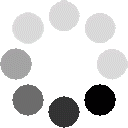Rights Contact Login For More Details
- Wiley
More About This Title Secure Connected Objects
- English
English
In this book, the authors focus on the concrete aspects of IoT (Internet of Things): the daily operation, on the ground, of this domain, including concrete and detailed discussion of the designs, applications and realizations of Secure Connected Things and IoT. As experts in the development of RFID and IoT technologies, the authors offer the reader a highly technical discussion of these topics, including the many approaches (technical, security, safety, ergonomic, economic, normative, regulations, etc.) involved in Secure Connected Objects projects.
This book is written both for readers wishing to familiarize themselves with the complex issues surrounding networking objects and for those who design these connective "things".
- English
English
Dominique Paret is a consultant in radiofrequency identification, contactless technologies, NFC and indoor geolocalization. He teaches electronics and RFID in various engineering schools. He is also the author of several books on RFID technologies.
Jean-Paul Huon, consultant.
- English
English
Foreword xi
Preface xiii
Acknowledgements xv
Preamble xvii
Part 1. Introduction – The Buzz about IoT and IoE 1
Chapter 1. Introduction 3
1.1. Definition of communicating- or connected Things 3
Chapter 2. The (Overly) Vast World of IoT 9
2.1. 2011–2016: the craze for the term "Connected Thing" 9
2.2. The true goal of this book 14
Chapter 3. Why a Connectable Thing? 15
3.1. Examples of connectable things 15
Part 2. Constraints Surrounding an IoT Project 21
Chapter 4. Aspects to be Taken into Consideration 23
4.1. Aspects pertaining to the concrete realization of Connected Things 23
Chapter 5. Financial and Marketing Aspects 27
5.1. Economic aspects 27
5.2. Ergonomic aspects 29
Chapter 6. Technical and Industrial Aspects 31
6.1. Technical aspects 31
6.2. Energy aspects 32
6.3. Industrial aspects 39
Chapter 7. Regulatory and Normative Aspects 41
7.1. Regulatory aspects and recommendations 41
7.2. Health-related recommendations 43
7.3. Societal regulations and individual freedoms (privacy) 45
7.4. Environmental regulations and recycling 53
7.5. Normative aspects 55
Chapter 8. Security Aspects 59
8.1. Security aspects 59
8.2. Judging the quality of security 80
8.3. Some thoughts about security, privacy and IoT 81
8.4. Vulnerabilities and attacks in the IoT chain 82
Part 3. Overall Architecture of the IoT Chain 87
Chapter 9. Communication Models in IoT 89
9.1. Communication models in IoT 89
Chapter 10. Overall Architecture of an IoT System 101
10.1. Overall architecture of a CT and IoT solution 101
10.2. From a more technological point of view 102
10.3. The very numerous protocols involved 113
Part 4. Detailed Description of the IoT Chain 117
Part 4A. From the User (The Outside World) to the Thing 119
Chapter 11. From the Outside World to the Thing 121
11.1. Connection of the Thing to the outside world 121
Chapter 12. The Secure Connected Thing 127
12.1. Physical constitution of the Thing 127
Part 4B. From the Thing to the Base Station 131
Chapter 13. Means of Communication to Access a Base Station 133
13.1. Possible network connectivity technologies 133
13.2. Medium-range MR Wide-band (hundreds of meters) 136
13.3. Long-range (LR – tens of kilometers) 138
13.4. LTN – Low-Throughput Network 152
Part 4C. From the Base Station to the Server 203
Chapter 14. Network Access Layer – IP 205
14.1. IPv4 205
14.2. IPv6 207
14.3. 6LoWPAN 209
Chapter 15. The Server 215
15.1. Conventional functions of a server in IoT 216
Chapter 16. Transport and Messaging Protocols 219
16.1. Transport 219
16.2. "IoT messaging" technologies 221
16.3. Protocols 225
16.4. HTTP – HyperText Transfer Protocol 226
16.5. HTTP/2 227
16.6. MQTT – Message Queuing Telemetry Transport 227
16.7. CoAP – Constrained Application Protocol 229
16.8. XMPP 230
16.9. DDS – Data Distribution Service 231
16.10. AMQP – Advanced Message Queuing Protocol 232
16.11. SMQ 233
16.12. JMS – Java Messaging Service 233
16.13. Other protocols 234
16.14. The broker 234
16.14.1 Examples of possibilities 235
16.15. Programming languages 236
16.16. Operating systems 236
Part 4D. From the Cloud Server to the Various Users 237
Chapter 17. Cloud and Fog Computing 239
17.1. Cloud computing? 239
17.2. Example: the PaaS platform AWS IoT 242
17.3. How security is managed 244
17.4. Fog computing? 245
17.5. Big data 246
17.6. Natural interfaces 247
Part 5. Concrete Realization of an IoT Solution Examples and Costs 249
Chapter 18. Examples of the Concrete Realization of Connected Things 251
18.1. Subject/application taken as an example 251
Chapter 19. Cost Aspects 261
19.1. CAPEX and OPEX are in the same boat… 261
Conclusion 279
Bibliography 281
Index 285

